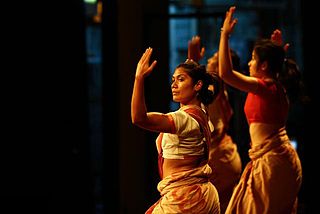
The history of Sri Lanka is intertwined with the history of the broader Indian subcontinent and the surrounding regions, comprising the areas of South Asia, Southeast Asia and Indian Ocean.

Buddhism is the second largest religion in Malaysia, after Islam, with 19.8% of Malaysia's population being Buddhist, although some estimates put that figure at 21.6% when combining estimates of numbers of Buddhists with figures for adherents of Chinese religions which incorporate elements of Buddhism. Buddhism in Malaysia is mainly practised by the ethnic Malaysian Chinese, but there are also Malaysian Siamese, Malaysian Sri Lankans and Burmese in Malaysia that practice Buddhism such as Ananda Krishnan and K. Sri Dhammananda and a sizeable population of Malaysian Indians.

Matale is the administrative capital city of the Matale District. It is the most urbanised and populated centre in the district. Matale is also the second largest municipal and urban centre in central province after Kandy. It is located at the heart of the central hills of the island and lies in a broad, fertile valley at an elevation of 364 m (1,194 ft) above sea level. Surrounding the city are the Knuckles Mountain Range, the foothills were called Wiltshire by the British. They have also called this place as Matelle.

After the outbreak of the Second World War, in the British Crown Colony of Ceylon, the government of Sir Don Baron Jayatilaka assured the British King and his government of its continued support.
Sri Lankan Australians are people of Sri Lankan heritage living in Australia; this includes Sri Lankans by birth and by ancestry. Sri Lankan Australians constitute one of the largest groups of Overseas Sri Lankan communities and are the largest diasporic Sri Lankan community in Oceania. Sri Lankan Australians consist of people with Sinhalese, Tamil, Moor, Burgher, Malay and Chinese origins among others.

Brickfields is a neighbourhood located on the western flank central Kuala Lumpur, Malaysia. It is known as Kuala Lumpur's Little India due to the high percentage of Indian residents and businesses. Brickfields been ranked third in Airbnb's list of top trending destinations.
The Donoughmore Commission (DC) was responsible for the creation of the Donoughmore Constitution in effect between 1931–47 in Ceylon. In 1931 there were approximately 12% Ceylonese Tamils, 12% Indian Tamils, 65% Sinhalese, and ~3% Ceylon Moors. The British government had introduced a form of communal representation which a strong Tamil representation, out of proportion to the population of the Tamil community. The Sinhalese had been divided into up-country and low-country Sinhalese.

Buddhist Maha Vihara is a Sri Lankan temple situated in Brickfields of Kuala Lumpur in Malaysia. The temple became a focal point for the annual Wesak festival within the city suburb.

The Sri Lankan Tamil diaspora refers to the global diaspora of Sri Lankan Tamil origin. It can be said to be a subset of the larger Sri Lankan and Tamil diaspora.

Samuel James Veluppillai Chelvanayakam was a Malaysian-born Ceylonese Tamil lawyer, politician and Member of Parliament. He was the founder and leader of the Illankai Tamil Arasu Kachchi (ITAK) and Tamil United Liberation Front (TULF) and a political leader of the Ceylon Tamil community for more than two decades. Chelvanayakam has been described as a father figure to Ceylon's Tamils, to whom he was known as "Thanthai Chelva".
The origins of the Sri Lankan Civil War lie in the continuous political rancor between the majority Sinhalese and the minority Sri Lankan Tamils. According to Jonathan Spencer, a social anthropologist from the School of Social and Political Studies of the University of Edinburgh, the war is an outcome of how modern ethnic identities have been made and re-made since the colonial period, with the political struggle between minority Tamils and the Sinhalese-dominant government accompanied by rhetorical wars over archeological sites and place name etymologies, and the political use of the national past.

Sri Kandaswamy Kovil is a Hindu temple located along Jalan Scott, Brickfields in Kuala Lumpur, Malaysia. The temple is over a century old.

British Sri Lankans are an ethnic group referring to British people who can trace their ancestry to Sri Lanka. It can refer to a variety of ethnicities and races, including Sinhalese, Tamils, Moors/Muslims and Burghers.

The Kingdom of Kotte, named after its capital, Kotte, was a Sinhalese kingdom that flourished in Sri Lanka during the 15th century.

The British Ceylon period is the history of Sri Lanka between 1815 and 1948. It follows the fall of the Kandyan Kingdom into the hands of the British Empire. It ended over 2300 years of Sinhalese monarchy rule on the island. The British rule on the island lasted until 1948 when the country regained independence following the Sri Lankan independence movement.

Malaysian Indians or Indian Malaysians are Malaysian citizens of Indian or South Asian ancestry. Today, they form the third-largest group in Malaysia after the Malays and the Chinese. Most are descendants of those who migrated from India during the British Malaya era from the early 19th to mid-20th centuries.
The Sri Lankan diaspora are Sri Lankan emigrants and expatriates from Sri Lanka, and their descendants, that reside in a foreign country. They number a total estimated population of around 3 million.
Ceylonese / Sri Lankans in Singapore consist mainly of Singaporeans of Sri Lankan origin whose ancestors came to Singapore before the independence of the island. With respect to ethnic group data in Singapore, Ceylonese / Sri Lankans were classified under Others up to 1970, whereupon they are classified as Indians.
The 1915 Sinhalese-Muslim riots was a widespread and prolonged ethnic riot in the island of Ceylon between Sinhalese Buddhists and the Ceylon Moors. The riots were eventually suppressed by the British colonial authorities.

Wilmot Arthur de Silva was Ceylonese veterinary surgeon, politician and philanthropist. He was the Minister of Health (1936–1942) in the second State Council of Ceylon and a former President of the Ceylon National Congress.















